
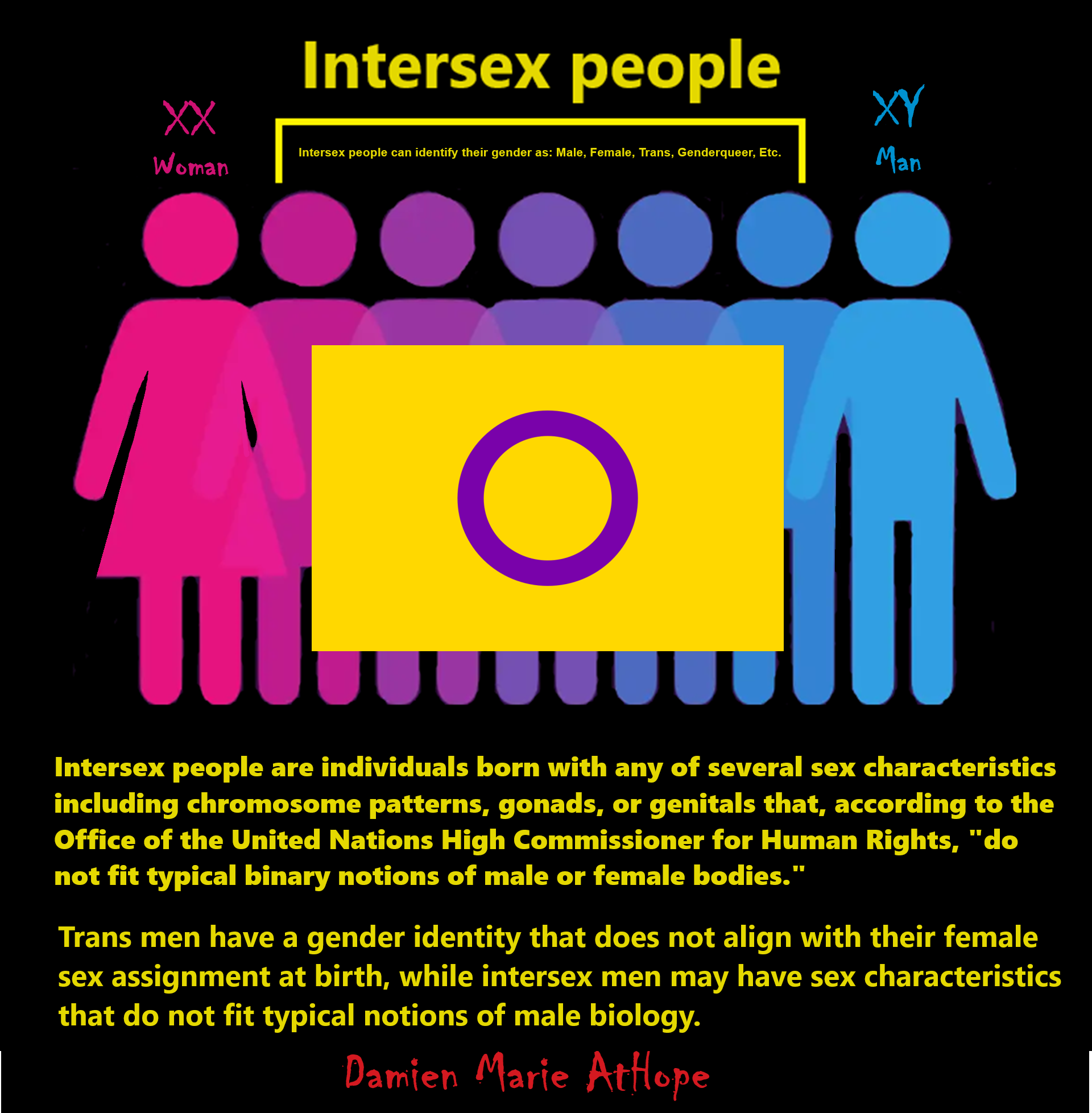
My Response, what about child’s body sovereignty rights? What matters more to you violation of ethics or tradition, and if you think a violation of rights is ok because of tradition which tradition is too much and who decides? Doing unnecessary medical procedures on a child without consent is unethical. Male Circumcision and the Rights of the Child: The main conclusion of the study was that female genital mutilation is a harmful traditional practice in the sense of Article 24(3) of the UN Convention on the Rights of the Child and that the States Parties accordingly should take all effective and appropriate measures to abolish this practice. In discussing the results of the research with Peter Baehr, he asked me whether the conclusions drawn in the report would also apply to male circumcision. Although the issue of male circumcision was not dealt with in the research on female genital mutilation, it was frequently mentioned in the literature and other material studied at that time. Ref
“Damien, you are no different from the ones who oppose women’s right to choose. They talk about abortion the same way you talk about circumcision. There is still a big difference through. Abortion terminates a potential life, whereas circumcision only enhances the pleasure later on in life… I know. I speak from experience. And I have no problem not remembering my own “Brith” It must have been a trip. They let me have wine for the first time in my life. Can you claim that kind of high at that young age? And by the way, female genital mutilation damages the woman for the rest of her life. You can’t compare that to circumcision. And if you do, you refuse to see the illogical claim you are advocating.”
My Response, Wrong, that is your position, you are no different from the ones who oppose women’s right to choose. I am saying only the child has a right to choose over their body not you, not a parent or garden, not traditions. And by the way, male genital mutilation damages the man for the rest of his life, without his consent. The foreskin (or prepuce) is a man’s most sensitive erogenous zone, more well-developed in humans than in other species of mammal. It has unique sexual functions (more on that later), which circumcision effectively destroys. Ref As for your flawed representation, the abortion issues are before birth, when this issue is about the child after birth. When one cannot abort or terminate the life of the child. As for omens rights it’s because the developing being in the woman’s body and she can decide what stays in her body a woman has no rights to terminate a child once born because the child is now separate and thus has its own rights to body and rights.
“Damien, you are advocating a position without the consent of those who had gone through it while not being consulted. If you conduct a survey and ask all those who got circumcised if they would sue their circumcisers (a new word I have just made up), I bet that you’ll find out that almost all of them agree with those who inflicted that “pain” on them. The proof lies in the fact that the tradition continues (by those who got circumcised) from one generation to the next. Interestingly enough, I also believe that circumcision is a stupid custom, but I don’t think that it’s worth a fight and an alienation of a whole group of people who believe in that tradition, where some of them see it as an obligation. It simply does not carry that kind of weight. Not even close.”
My Response, Well, the foreskin is the most sensitive part of the penis. It contains: 10,000 to 20,000 nerve endings (the most frequently cited statistic), or 20,000 to 70,000 (the most recently cited statistic). This statement about foreskin sensitivity is somewhat recent. It is one of the most popular statements made to justify the campaign against routine infant circumcision – and one of the most difficult to verify! One, major problem with the number, is that the foreskin, like all skin, contains at least 7 different types of nerve endings, not just the ones that stimulate the foreskin and produce sexual stimulation, and eventually, produce orgasm and ejaculation.
“Damien, so why am I not complaining?”
My Response, So, what does it matter, if you like the way you are or even wanted to cut off your parts off. The issue of ethics of others rights is not based on your likes. Thus, what Ii or you are ok with or like means nothing about human rights or body sovereignty rights of others including children. In addition, since you did not likely have your circumcision after being sexually active as an adult, you really don’t know if it could be better and anyway all humans deserve the right to consent to what happens to their body. I like tattoos this does not mean everyone could or would want the pain to have them this means only the person can and gas the right to alter or modify their body.
“Damien you keep advocating a position against the will of the people you are trying to protect. These people are in complete disagreement with you. Now, stop and think. Do you make any sense? Again, if you did not get it. The same people you are trying to protect are telling you to stop. They do not agree with you and want you to go away. These people are now adults, they happened to be babies. They were circumcised without being consulted. And they tell you to shut up. It’s not me. I don’t care so much about this specific issue. I think it’s a nonsensical one. I just try to tell you that it’s not a big deal and it’s not worth my and your time. I don’t even know why I am doing it now. I’d better stop.”
My Response, You are advocating against child rights; I support a child of legal age choosing if they wish to give consent to get circumcision. Because children are still developing, both physically and mentally, they aren’t considered capable of handling the same rights as mature adults. However, children do have some inherent legal rights as soon as they are born, and they obtain some additional rights as they grow. Children are not allowed to vote, hold property, consent to medical treatment, sue or be sued, or enter into certain types of contracts. Moreover, when they have the right to consent they can choose how to use it. Ref
Intact America, an organization devoted to ending infant circumcision, has launched a campaign to tell the American Academy of Pediatrics that they need to STOP promoting infant circumcision. In January 2016, the AAP published a report stating that babies shouldn’t be subjected to unnecessary pain. We agree. But they continue to promote circumcision, an extremely painful and unnecessary procedure carried out on children who cannot consent.
I signed Intact America’s petition because circumcision is medically unnecessary and painful, and violates babies’ rights. Will you stand by me and add your name, too? Just go to this link, and then share it with your friends and family: http://org2.salsalabs.com/o/5922/p/dia/action3/common/public/?action_KEY=22209
Blurred lines: Human sex chromosome swapping occurs more often than previously thought
Genital Mutilation
“The terms genital modification and genital mutilation can refer to permanent or temporary changes to human sex organs. Some forms of genital alteration are performed on adults with their informed consent at their own behest, usually for aesthetic reasons or to enhance stimulation. However, other forms are performed on people who do not give informed consent, including infants or children. Any of these procedures may be considered modifications or mutilations in different cultural contexts and by different groups of people.” ref
“The vast majority of genital cutting in the world is done for religious motives (though not all members of genital cutting religions adhere to the practice). In both cases, genital cutting is done as a:
- Rite of passage. In Islam, typically from childhood to puberty, and in Judaism. Brit milah is the ritual in which boys’ names are made public to the extended family and the community.
- Religious identity. Both in Judaism and Islam, genital cutting for males is seen as a badge of membership to the community.
- Repress sexual pleasure and desire. While this is explicitly recognized within Judaism, in the Muslim world, no such claims are made for male circumcision. However, many traditional cultures in East Africa and other Muslim jurisdictions have made such claims for female genital cutting. This claim is currently very controversial with numerous research papers and fatawa (religious legal ruling) arguing over the permissibility and purpose of female genital cutting.” ref
Male Genital Mutilation (MGM) “Circumcision”
“Male genital mutilation (MGM), often referred to as ‘male circumcision’, comprises all procedures involving partial or total removal of the external male genitalia or other injuries to the male genital organs whether for cultural, religious or other non-therapeutic reasons.” ref
“Male circumcision involves the removal of the foreskin. It may also involve frenectomy, the removal of the frenulum. A related procedure is preputioplasty, which is used as a treatment for phimosis. This procedure is most often performed upon infant boys. It has religious significance in the Jewish religion and in Islam. It spread into Western culture, and peaked in the early 80s. The bioethics of neonatal circumcision are a subject of intense debate, with circumcision advocates promoting it as beneficial, and supporters of genital integrity opposing it as harmful and/or a violation of the individual’s human rights. Some adults who were circumcised as infants engage in foreskin restoration, a method of stretching the penile skin in order to partially recreate the foreskin. Some academics use the term male genital cutting or male genital mutilation in reference to male circumcision.” ref
“Male circumcision is the removal of some or the entire foreskin (prepuce) from the penis. The word “circumcision” comes from Latin circum (meaning “around”) and cædere (meaning “to cut”). Early depictions of circumcision are found in cave paintings and Ancient Egyptian tombs, though some pictures are open to interpretation. Religious male circumcision is considered a commandment from God in Judaism. In Islam, though not discussed in the Qur’an, circumcision is widely practiced and most often considered to be a sunnah. It is also customary in some Christian churches in Africa, including some Oriental Orthodox Churches. According to the World Health Organization (WHO), global estimates suggest that 30% of males are circumcised, of whom 68% are Muslim. The prevalence of circumcision varies mostly with religious affiliation, and sometimes culture. Most circumcisions are performed during adolescence for cultural or religious reasons; in some countries they are more commonly performed during infancy.” ref
Types of MGM
- “Type I – excision or injury of part or all of the skin and specialized mucosal tissues of the penis including the prepuce and frenulum (circumcision, dorsal slit without closure).
- Type II – excision or injury to the glans (glandectomy) and/or penis shaft, (penectomy) along with Type I MGM. Any procedure that interferes with reproductive or sexual function in the adult male.
- Type III – excision or destruction of the testes (castration, orchidectomy) with or without Type II MGM.
- Type IV – unclassified: includes pricking, piercing or incision of the prepuce, glans, scrotum or other genital tissue; cutting and suturing of the prepuce over the glans (infibulation); slitting open the urethra along the ventral surface of the penis (sub-incision); slitting open the foreskin along its dorsal surface (super-incision); severing the frenulum; stripping the skin from the shaft of the penis; introducing corrosive or scalding substances onto the genital area; any other procedure which falls under the definition of MGM given above.
- The most common type of male genital mutilation is excision of the foreskin (circumcision), accounting for the vast majority of all cases; the most extreme form is excision or destruction of the testes (castration), which constitutes a small percentage of all procedures.” ref
The Who, What, and Why of MGM
“In cultures where it is an accepted norm, male genital mutilation is practiced by followers of all religious beliefs as well as animists and non-believers. MGM is usually performed either by a traditional practitioner, often with crude instruments and without anesthetic, or in a health care facility by qualified health personnel. The age at which male genital mutilation is performed varies from area to area. It is performed on infants a few days old, male children and adolescents, and, occasionally, on mature men.” ref
The reasons given by families for having MGM performed include:
- “Psychosexual reasons: elimination of the sensitive tissue of the foreskin and the stimulation that it provides, depriving the glans of its protective environment to reduce sexual pleasure;
- Sociological reasons: identification with the cultural heritage, initiation of boys into manhood, social integration, and the maintenance of social cohesion;
- Hygiene and aesthetic reasons: the foreskin is considered dirty and unsightly and is to be removed to promote hygiene and provide aesthetic appeal;
- Myths: babies don’t feel pain, a foreskin is hard to keep clean, circumcision protects against certain diseases, male circumcision is less barbaric than female circumcision;
- Religious reasons: Most Muslim and Jewish communities practice MGM in the belief that it is demanded by the Islamic and Judaic faiths. The practice, however, predates both religions.” ref
Consequences of MGM
“The immediate and long-term health consequences of male genital mutilation vary according to the type and severity of the procedure performed.” ref
“Immediate complications include severe pain, shock, hemorrhage, infection, excessive skin loss, skin bridges, glans deformation, bowing, meatal stenosis, loss of penis, and injury to adjacent tissue. Hemorrhage and infection can cause death. More recently, concern has arisen about the possible transmission of the human immunodeficiency virus (HIV) due to the use of one instrument in multiple operations. Some researchers are also promoting MGM as a tool to combat AIDS by touting studies that show a link between medicalized circumcision and reduced rates of HIV transmission, which is likely to increase the number of forced circumcisions and related complications.” ref
“Long-term consequences include scar formation, keratinization, sexual dysfunction, loss of sexual sensitivity, and increased friction and pain during sexual intercourse.” ref
“Psychosexual and psychological health: Genital mutilation may leave a lasting mark on the life and mind of the man who has undergone it. In the longer term, men may suffer feelings of anger, incompleteness, anxiety, depression, and lifelong psychological trauma.” ref
Prevalence of MGM
“Most of the boys and men who have undergone genital mutilation live in 28 African countries, the Middle East, the USA, and parts of Asia. They are also found in Europe, Australia, and Canada. Today, the number of boys and men who have undergone male genital mutilation is estimated at 650 million. It is estimated that each year, a further 13 million boys are at risk of undergoing MGM.” ref
Female Genital Mutilation (FGM)
“Female genital mutilation (FGM), also known as female genital cutting, female genital mutilation/cutting (FGM/C), and female circumcision, is the ritual cutting or removal of some or all of the external female genitalia. The practice is found in some countries of Africa, Asia, and the Middle East, and within communities abroad from countries in which FGM is common. UNICEF estimated, in 2016, that 200 million women in 30 countries—Indonesia, Iraqi Kurdistan, Yemen, and 27 African countries—had been subjected to one or more types of FGM.” ref
‘Typically carried out by a traditional circumciser using a blade, FGM is conducted from days after birth to puberty and beyond. In half of the countries for which national figures are available, most girls are cut before the age of five. Procedures differ according to the country or ethnic group. They include removal of the clitoral hood (type 1-a) and clitoral glans (1-b); removal of the inner labia; and removal of the inner and outer labia and closure of the vulva. In this last procedure, known as infibulation, a small hole is left for the passage of urine and menstrual fluid; the vagina is opened for intercourse and opened further for childbirth.” ref
“The practice is rooted in gender inequality, attempts to control women’s sexuality, and ideas about purity, modesty, and beauty. It is usually initiated and carried out by women, who see it as a source of honor, and who fear that failing to have their daughters and granddaughters cut will expose the girls to social exclusion. Adverse health effects depend on the type of procedure; they can include recurrent infections, difficulty urinating and passing menstrual flow, chronic pain, the development of cysts, an inability to get pregnant, complications during childbirth, and fatal bleeding. There are no known health benefits.” ref
“There have been international efforts since the 1970s to persuade practitioners to abandon FGM, and it has been outlawed or restricted in most of the countries in which it occurs, although the laws are often poorly enforced. Since 2010, the United Nations has called upon healthcare providers to stop performing all forms of the procedure, including reinfibulation after childbirth and symbolic “nicking” of the clitoral hood. The opposition to the practice is not without its critics, particularly among anthropologists, who have raised difficult questions about cultural relativism and the universality of human rights.” ref
intersex Genital Mutilations (IGM)
“Intersex medical interventions, also known as intersex genital mutilations (IGM), are surgical, hormonal and other medical interventions performed to modify atypical or ambiguous genitalia and other sex characteristics, primarily for the purposes of making a person’s appearance more typical and to reduce the likelihood of future problems. The history of intersex surgery has been characterized by controversy due to reports that surgery can compromise sexual function and sensation, and create lifelong health issues. Timing, evidence, necessity, and indications for surgeries in infancy, adolescence, or adult age have been controversial, associated with issues of consent.” ref
“Interventions on intersex infants and children are increasingly recognized as human rights issues. Intersex organizations, and human rights institutions increasingly question the basis and necessity of such interventions. In 2011, Christiane Völling won the first successful case brought against a surgeon for non-consensual surgical intervention. In 2015, the Council of Europe recognized, for the first time, a right for intersex persons not to undergo sex-assignment treatment, and Malta became the first country to prohibit involuntary or coerced modifications to sex characteristics.” ref
The goals of surgery vary with the type of intersex condition but usually include one or more of the following:
“Physical health rationales:
- to improve the potential for fertility
- to provide an outlet for menstruation
- to prevent or reduce urinary tract infections or obstruction
- to reduce risk of cancer in gonads with high risk levels
- to close open wounds or exposed internal organs
- to improve urinary or fecal continence.” ref
“Psychosocial rationales:
- to alleviate parental distress over the atypical genital appearance.
- to make the appearance more normal for the person’s sex of rearing
- to reduce effects of atypical genitalia on psychosexual development and gender identity
- to improve the potential for adult sexual relationships.” ref
“Both sets of rationales may be the subject of debate, particularly as the consequences of surgical interventions are lifelong and irreversible. Questions regarding physical health include accurately assessing risk levels, necessity, and timing. Psychosocial rationales are particularly susceptible to questions of necessity as they reflect parental, social, and cultural concerns. There remains no clinical consensus or clear evidence regarding surgical timing, necessity, type of surgical intervention, degree of difference warranting intervention, and evaluation method. Such surgeries are the subject of significant contention, including community activism, and multiple reports by international human rights and health institutions, and national ethics bodies.” ref
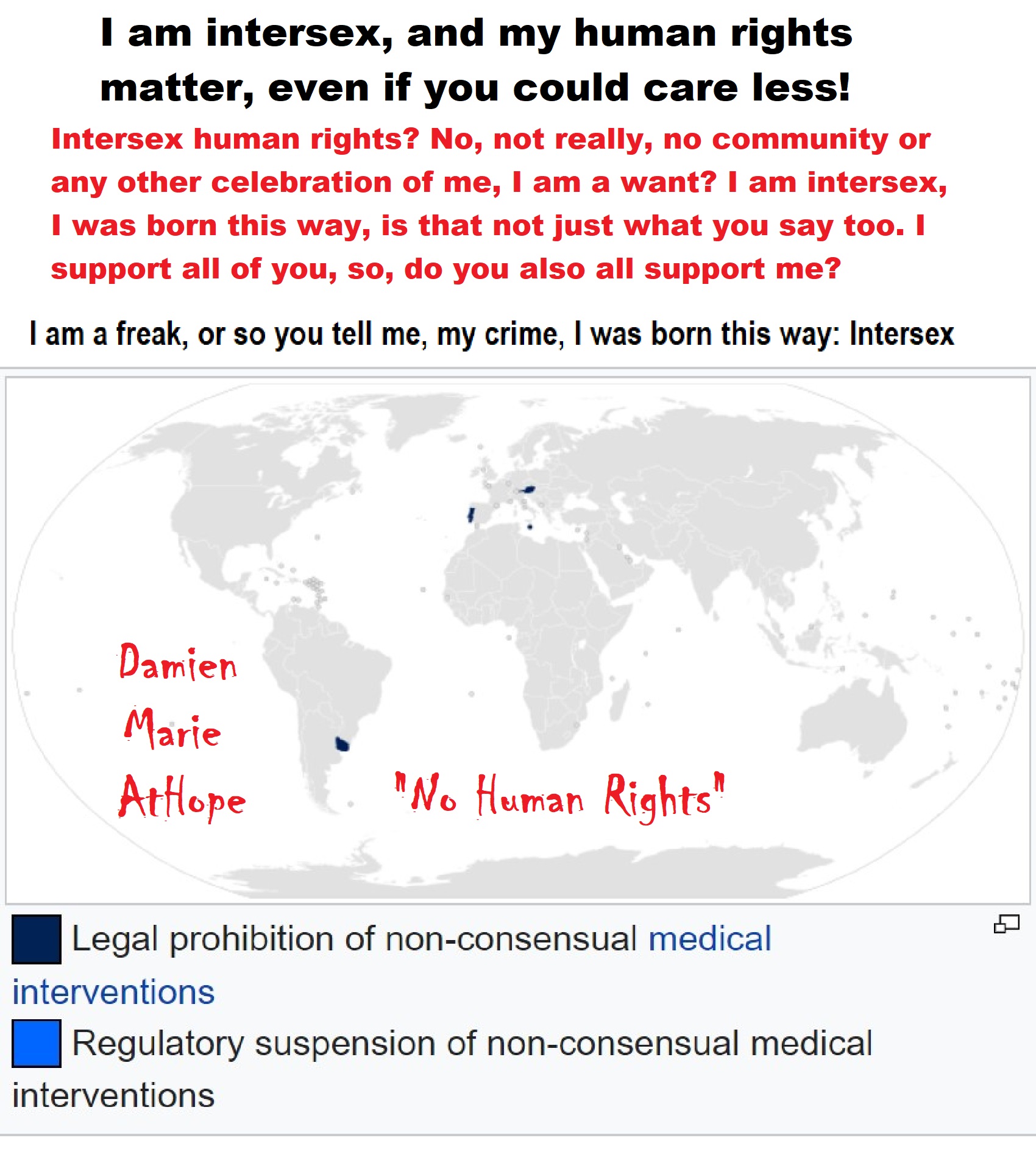
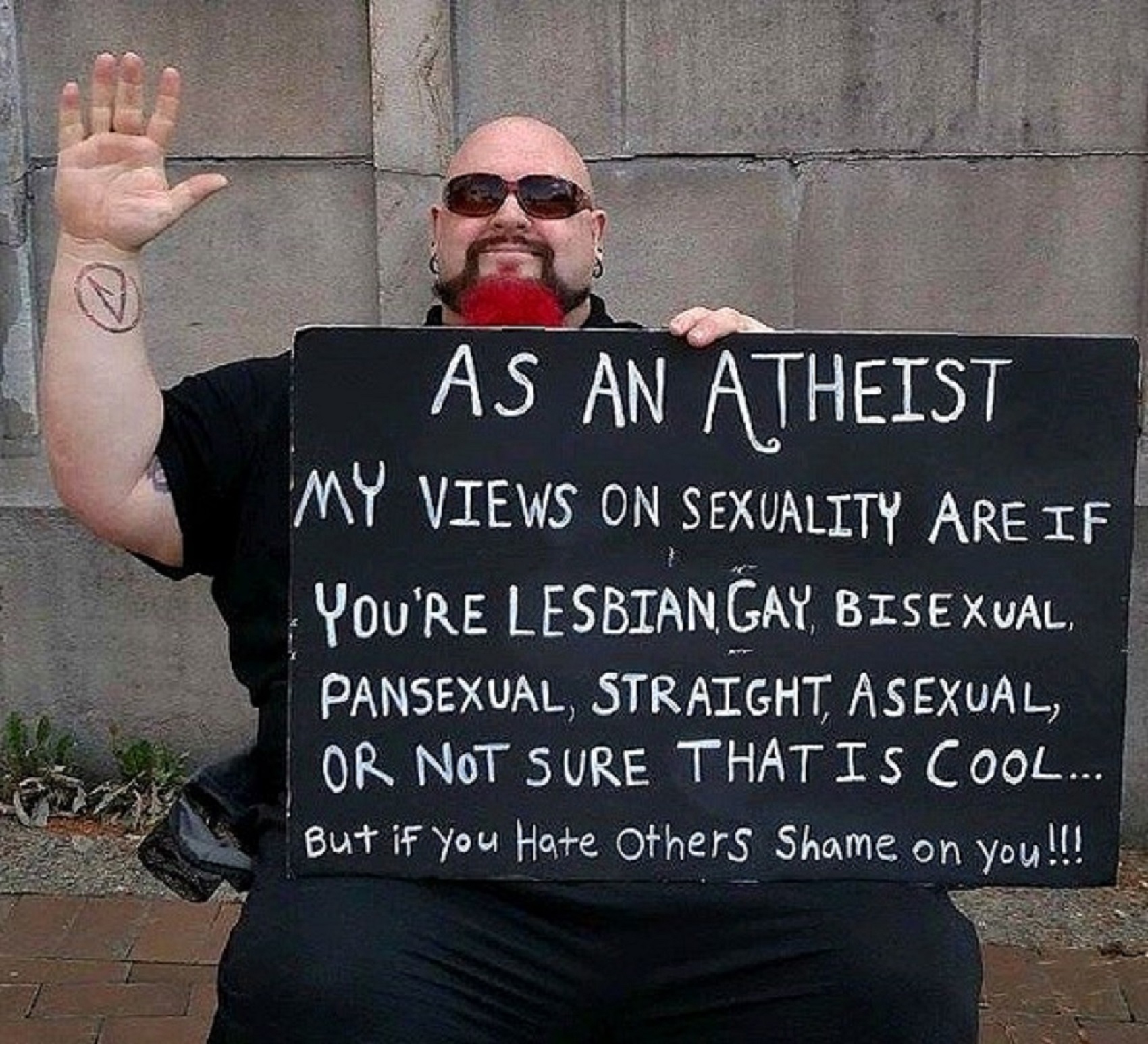
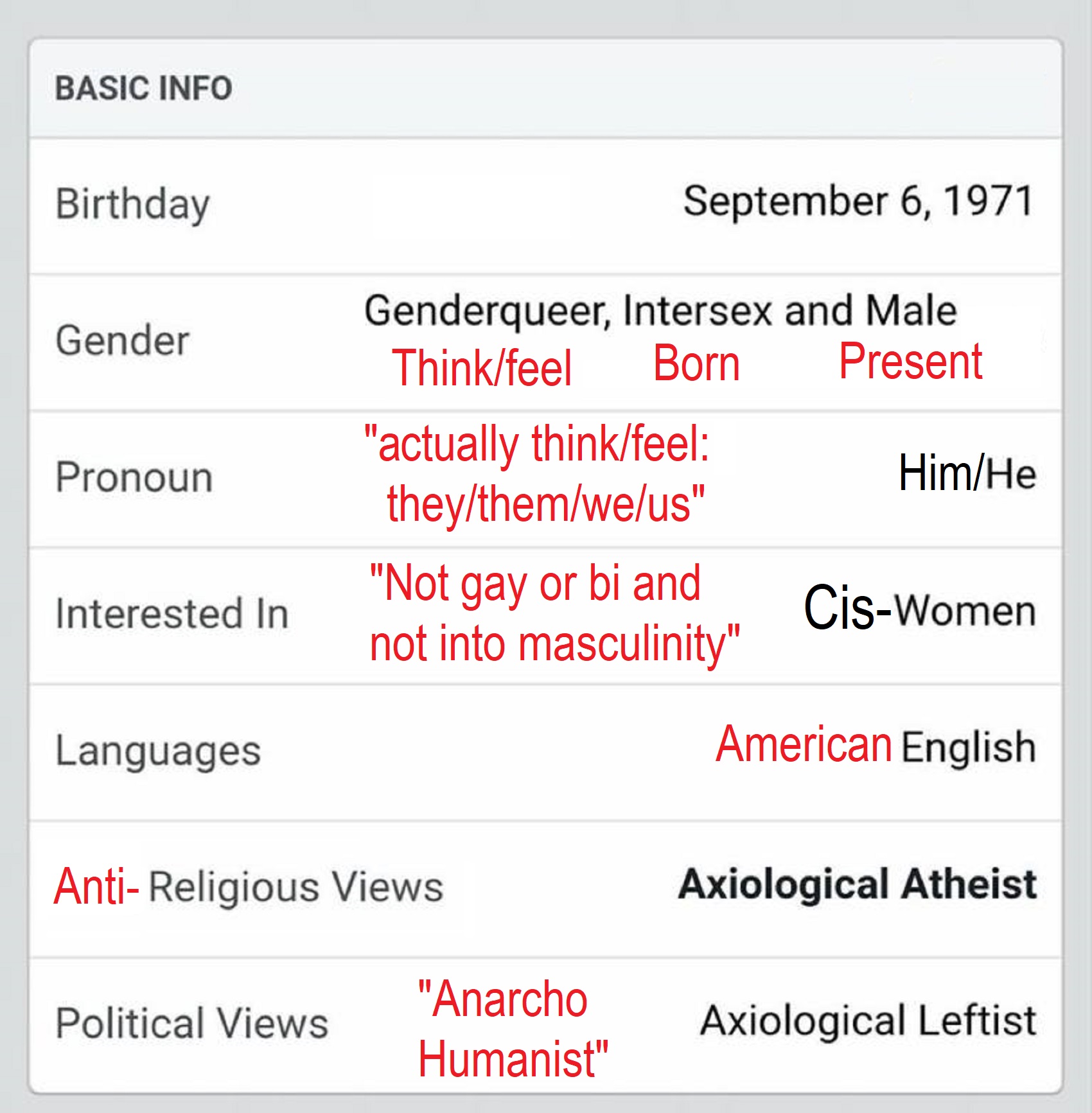
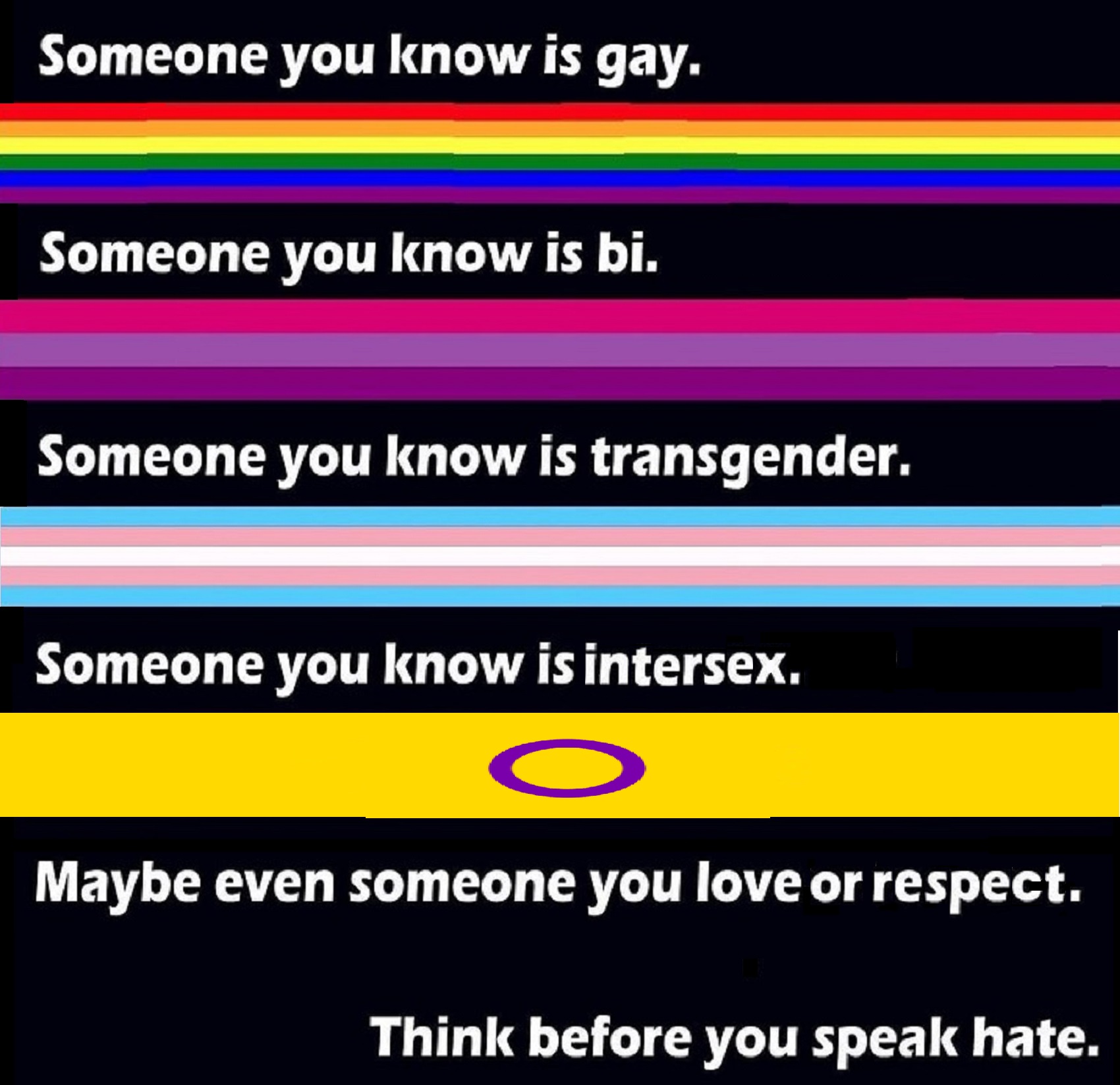
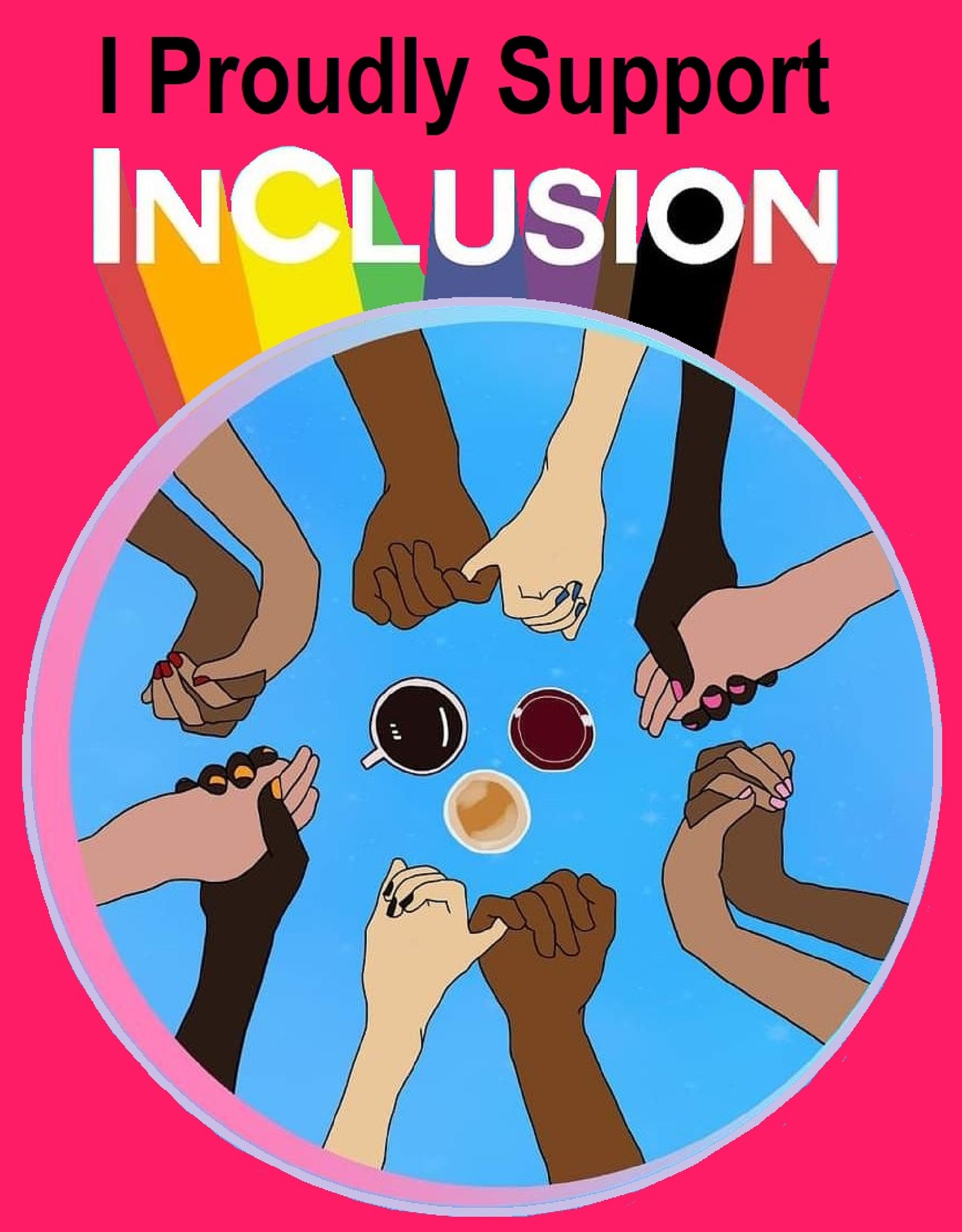
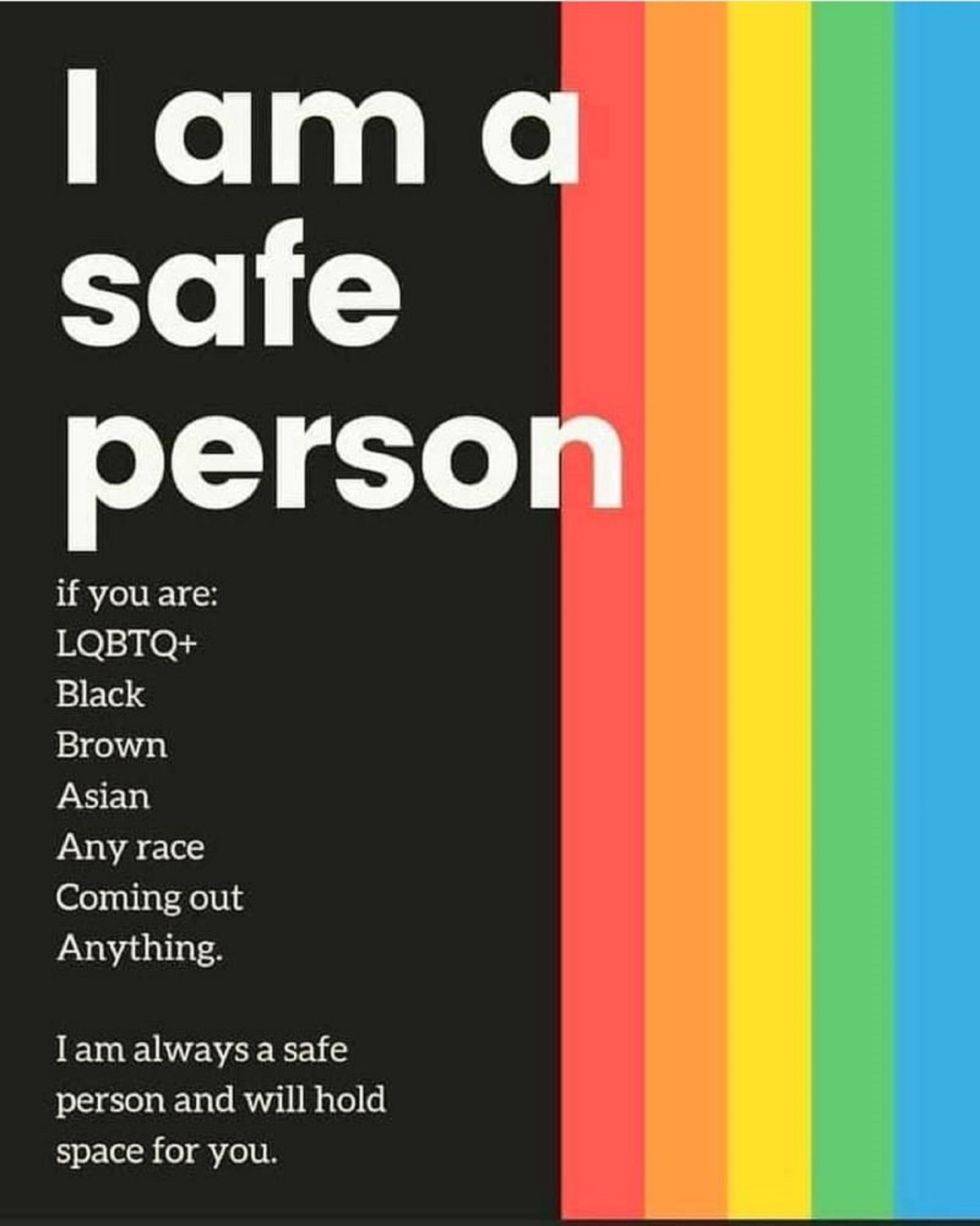
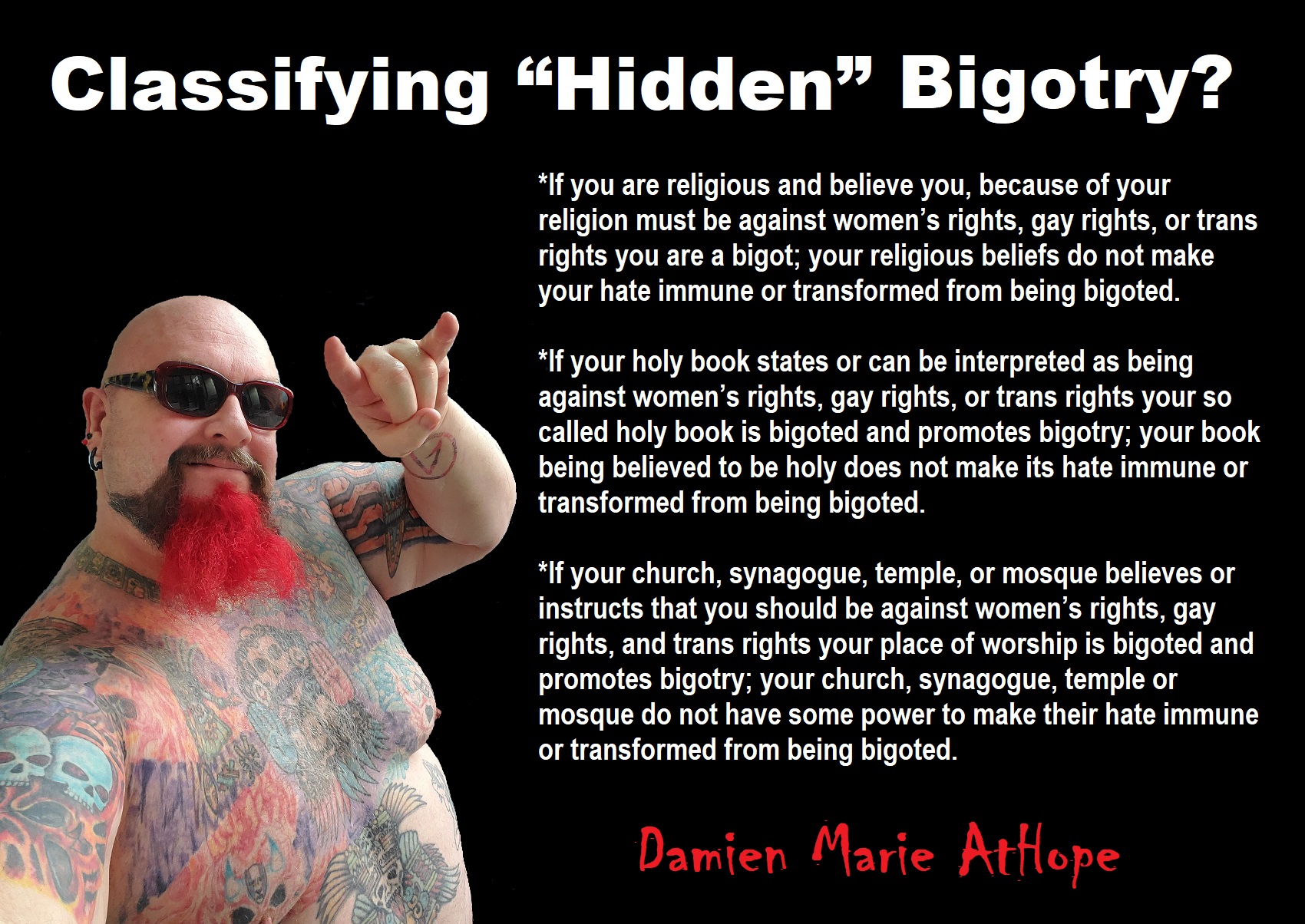
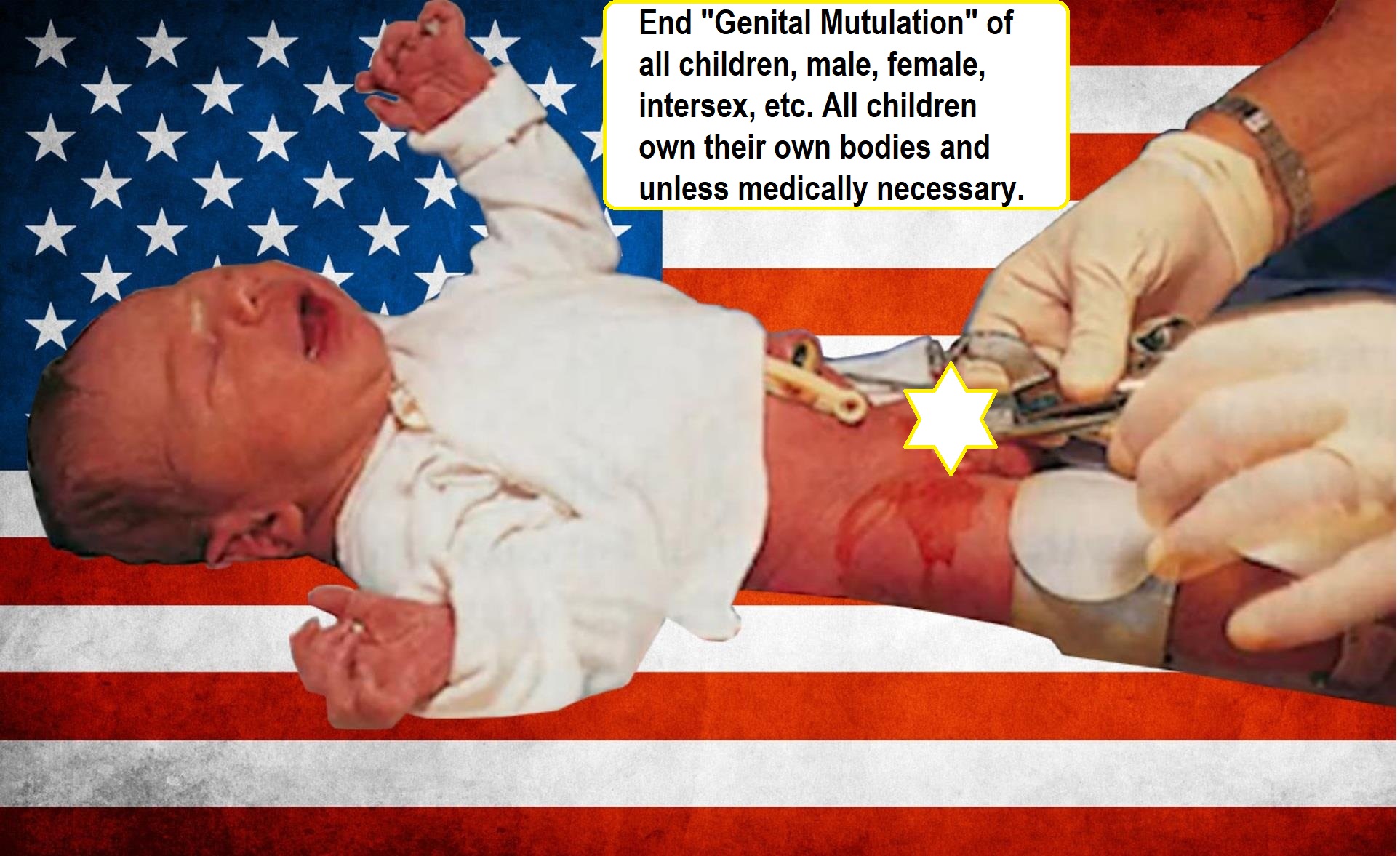



“Theists, there has to be a god, as something can not come from nothing.”
Well, thus something (unknown) happened and then there was something. This does not tell us what the something that may have been involved with something coming from nothing. A supposed first cause, thus something (unknown) happened and then there was something is not an open invitation to claim it as known, neither is it justified to call or label such an unknown as anything, especially an unsubstantiated magical thinking belief born of mythology and religious storytelling.


While hallucinogens are associated with shamanism, it is alcohol that is associated with paganism.
The Atheist-Humanist-Leftist Revolutionaries Shows in the prehistory series:
Show two: Pre-animism 300,000 years old and animism 100,000 years old: related to “Anarchism and Socialism”
Show tree: Totemism 50,000 years old: related to “Anarchism and Socialism”
Show four: Shamanism 30,000 years old: related to “Anarchism and Socialism”
Show five: Paganism 12,000 years old: related to “Anarchism and Socialism”
Show six: Emergence of hierarchy, sexism, slavery, and the new male god dominance: Paganism 7,000-5,000 years old: related to “Anarchism and Socialism” (Capitalism) (World War 0) Elite and their slaves!
Prehistory: related to “Anarchism and Socialism” the division of labor, power, rights, and recourses: VIDEO
Pre-animism 300,000 years old and animism 100,000 years old: related to “Anarchism and Socialism”: VIDEO
Totemism 50,000 years old: related to “Anarchism and Socialism”: VIDEO
Shamanism 30,000 years old: related to “Anarchism and Socialism”: VIDEO
Paganism 12,000 years old: related to “Anarchism and Socialism” (Pre-Capitalism): VIDEO
Paganism 7,000-5,000 years old: related to “Anarchism and Socialism” (Capitalism) (World War 0) Elite and their slaves: VIEDO
Paganism 5,000 years old: progressed organized religion and the state: related to “Anarchism and Socialism” (Kings and the Rise of the State): VIEDO
Paganism 4,000 years old: related to “Anarchism and Socialism” (First Moralistic gods, then the Origin time of Monotheism): VIEDO
I do not hate simply because I challenge and expose myths or lies any more than others being thought of as loving simply because of the protection and hiding from challenge their favored myths or lies.
The truth is best championed in the sunlight of challenge.
An archaeologist once said to me “Damien religion and culture are very different”
My response, So are you saying that was always that way, such as would you say Native Americans’ cultures are separate from their religions? And do you think it always was the way you believe?
I had said that religion was a cultural product. That is still how I see it and there are other archaeologists that think close to me as well. Gods too are the myths of cultures that did not understand science or the world around them, seeing magic/supernatural everywhere.
I personally think there is a goddess and not enough evidence to support a male god at Çatalhöyük but if there was both a male and female god and goddess then I know the kind of gods they were like Proto-Indo-European mythology.
This series idea was addressed in, Anarchist Teaching as Free Public Education or Free Education in the Public: VIDEO
Our 12 video series: Organized Oppression: Mesopotamian State Force and the Politics of power (9,000-4,000 years ago), is adapted from: The Complete and Concise History of the Sumerians and Early Bronze Age Mesopotamia (7000-2000 BC): https://www.youtube.com/watch?v=szFjxmY7jQA by “History with Cy“
Show #1: Mesopotamian State Force and the Politics of Power (Samarra, Halaf, Ubaid)
Show #2: Mesopotamian State Force and the Politics of Power
Show #3: Mesopotamian State Force and the Politics of Power (Uruk and the First Cities)
Show #4: Mesopotamian State Force and the Politics of Power (First Kings)
Show #5: Mesopotamian State Force and the Politics of Power (Early Dynastic Period)
Show #6: Mesopotamian State Force and the Politics of Power
Show #7: Mesopotamian State Force and the Politics of Power (Sargon and Akkadian Rule)
Show #9: Mesopotamian State Force and the Politics of Power (Gudea of Lagash and Utu-hegal)
Show #12: Mesopotamian State Force and the Politics of Power (Aftermath and Legacy of Sumer)

The “Atheist-Humanist-Leftist Revolutionaries”
Cory Johnston ☭ Ⓐ Atheist Leftist @Skepticallefty & I (Damien Marie AtHope) @AthopeMarie (my YouTube & related blog) are working jointly in atheist, antitheist, antireligionist, antifascist, anarchist, socialist, and humanist endeavors in our videos together, generally, every other Saturday.
Why Does Power Bring Responsibility?
Think, how often is it the powerless that start wars, oppress others, or commit genocide? So, I guess the question is to us all, to ask, how can power not carry responsibility in a humanity concept? I know I see the deep ethical responsibility that if there is power their must be a humanistic responsibility of ethical and empathic stewardship of that power. Will I be brave enough to be kind? Will I possess enough courage to be compassionate? Will my valor reach its height of empathy? I as everyone, earns our justified respect by our actions, that are good, ethical, just, protecting, and kind. Do I have enough self-respect to put my love for humanity’s flushing, over being brought down by some of its bad actors? May we all be the ones doing good actions in the world, to help human flourishing.
I create the world I want to live in, striving for flourishing. Which is not a place but a positive potential involvement and promotion; a life of humanist goal precision. To master oneself, also means mastering positive prosocial behaviors needed for human flourishing. I may have lost a god myth as an atheist, but I am happy to tell you, my friend, it is exactly because of that, leaving the mental terrorizer, god belief, that I truly regained my connected ethical as well as kind humanity.
Cory and I will talk about prehistory and theism, addressing the relevance to atheism, anarchism, and socialism.
At the same time as the rise of the male god, 7,000 years ago, there was also the very time there was the rise of violence, war, and clans to kingdoms, then empires, then states. It is all connected back to 7,000 years ago, and it moved across the world.
Cory Johnston: https://damienmarieathope.com/2021/04/cory-johnston-mind-of-a-skeptical-leftist/?v=32aec8db952d
The Mind of a Skeptical Leftist (YouTube)
Cory Johnston: Mind of a Skeptical Leftist @Skepticallefty
The Mind of a Skeptical Leftist By Cory Johnston: “Promoting critical thinking, social justice, and left-wing politics by covering current events and talking to a variety of people. Cory Johnston has been thoughtfully talking to people and attempting to promote critical thinking, social justice, and left-wing politics.” http://anchor.fm/skepticalleft
Cory needs our support. We rise by helping each other.
Cory Johnston ☭ Ⓐ @Skepticallefty Evidence-based atheist leftist (he/him) Producer, host, and co-host of 4 podcasts @skeptarchy @skpoliticspod and @AthopeMarie
Damien Marie AtHope (“At Hope”) Axiological Atheist, Anti-theist, Anti-religionist, Secular Humanist. Rationalist, Writer, Artist, Poet, Philosopher, Advocate, Activist, Psychology, and Armchair Archaeology/Anthropology/Historian.
Damien is interested in: Freedom, Liberty, Justice, Equality, Ethics, Humanism, Science, Atheism, Antiteism, Antireligionism, Ignosticism, Left-Libertarianism, Anarchism, Socialism, Mutualism, Axiology, Metaphysics, LGBTQI, Philosophy, Advocacy, Activism, Mental Health, Psychology, Archaeology, Social Work, Sexual Rights, Marriage Rights, Woman’s Rights, Gender Rights, Child Rights, Secular Rights, Race Equality, Ageism/Disability Equality, Etc. And a far-leftist, “Anarcho-Humanist.”
I am not a good fit in the atheist movement that is mostly pro-capitalist, I am anti-capitalist. Mostly pro-skeptic, I am a rationalist not valuing skepticism. Mostly pro-agnostic, I am anti-agnostic. Mostly limited to anti-Abrahamic religions, I am an anti-religionist.
To me, the “male god” seems to have either emerged or become prominent around 7,000 years ago, whereas the now favored monotheism “male god” is more like 4,000 years ago or so. To me, the “female goddess” seems to have either emerged or become prominent around 11,000-10,000 years ago or so, losing the majority of its once prominence around 2,000 years ago due largely to the now favored monotheism “male god” that grow in prominence after 4,000 years ago or so.
My Thought on the Evolution of Gods?
Animal protector deities from old totems/spirit animal beliefs come first to me, 13,000/12,000 years ago, then women as deities 11,000/10,000 years ago, then male gods around 7,000/8,000 years ago. Moralistic gods around 5,000/4,000 years ago, and monotheistic gods around 4,000/3,000 years ago.
To me, animal gods were likely first related to totemism animals around 13,000 to 12,000 years ago or older. Female as goddesses was next to me, 11,000 to 10,000 years ago or so with the emergence of agriculture. Then male gods come about 8,000 to 7,000 years ago with clan wars. Many monotheism-themed religions started in henotheism, emerging out of polytheism/paganism.


Damien Marie AtHope (Said as “At” “Hope”)/(Autodidact Polymath but not good at math):
Axiological Atheist, Anti-theist, Anti-religionist, Secular Humanist, Rationalist, Writer, Artist, Jeweler, Poet, “autodidact” Philosopher, schooled in Psychology, and “autodidact” Armchair Archaeology/Anthropology/Pre-Historian (Knowledgeable in the range of: 1 million to 5,000/4,000 years ago). I am an anarchist socialist politically. Reasons for or Types of Atheism
My Website, My Blog, & Short-writing or Quotes, My YouTube, Twitter: @AthopeMarie, and My Email: damien.marie.athope@gmail.com
